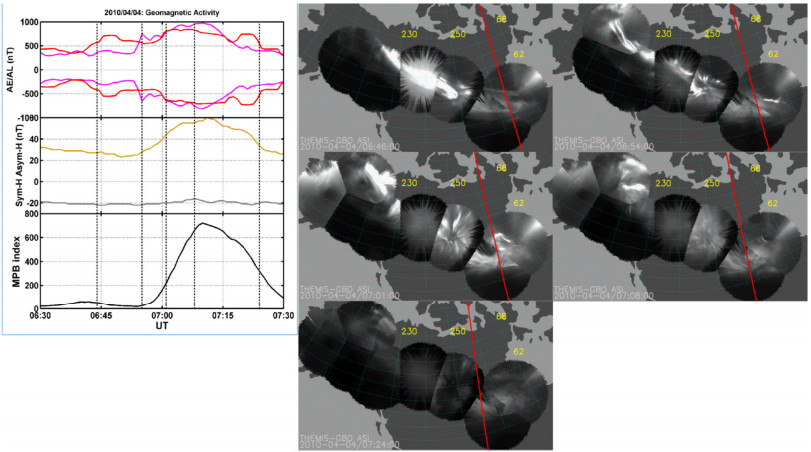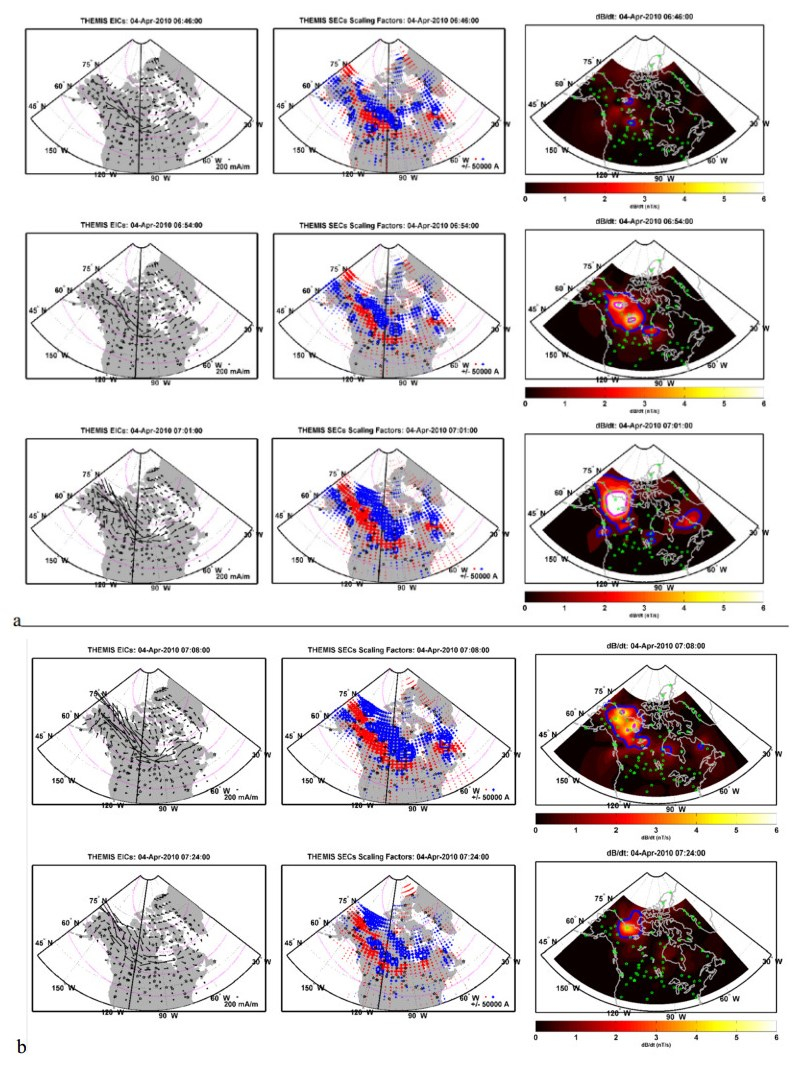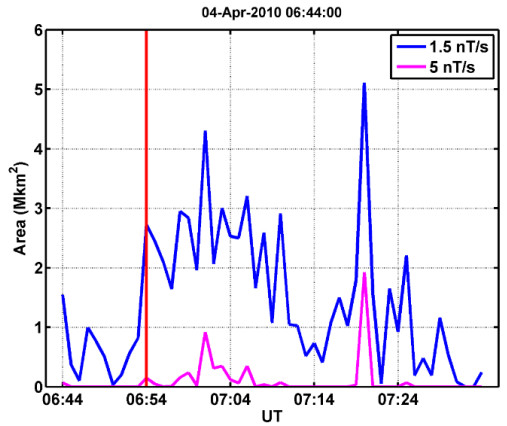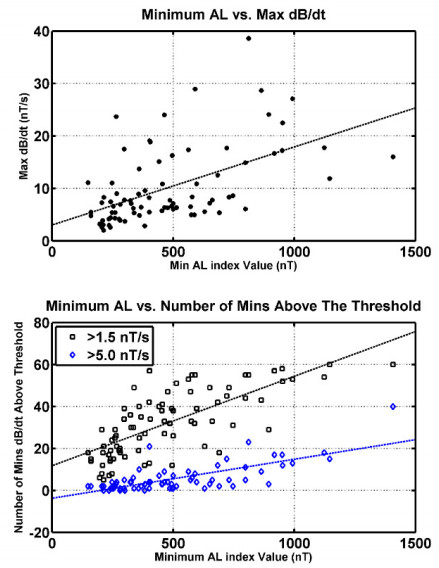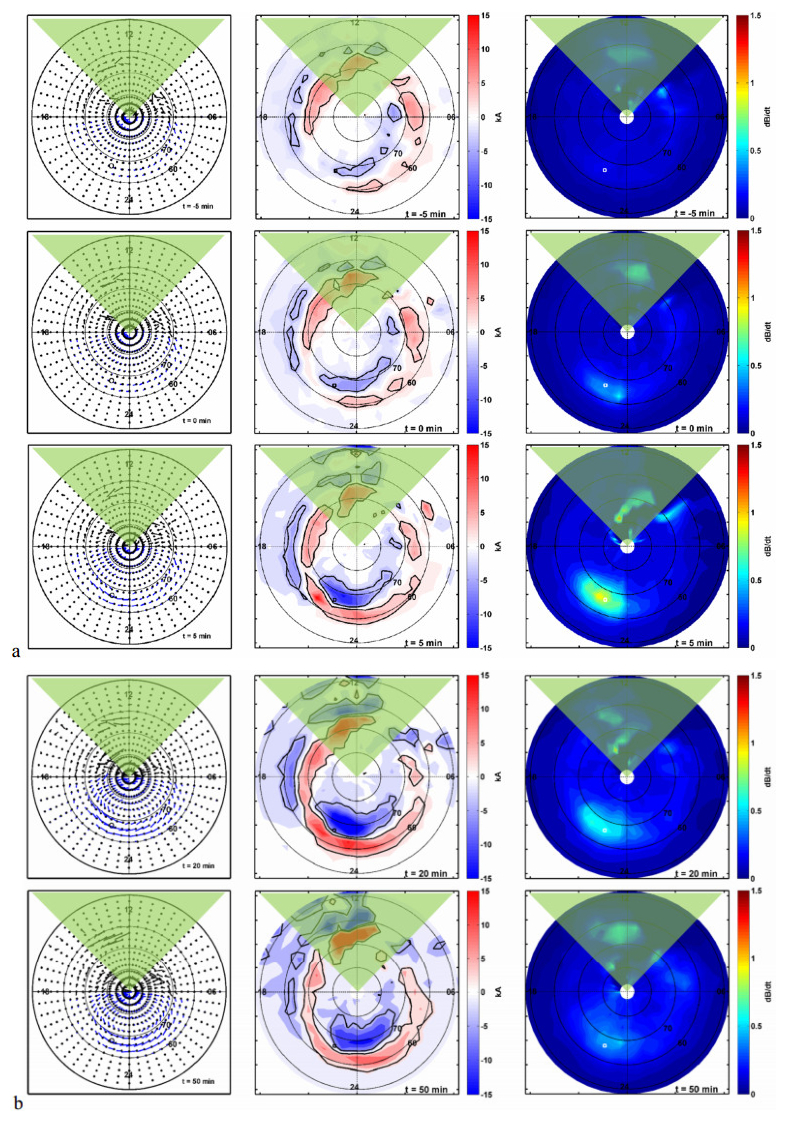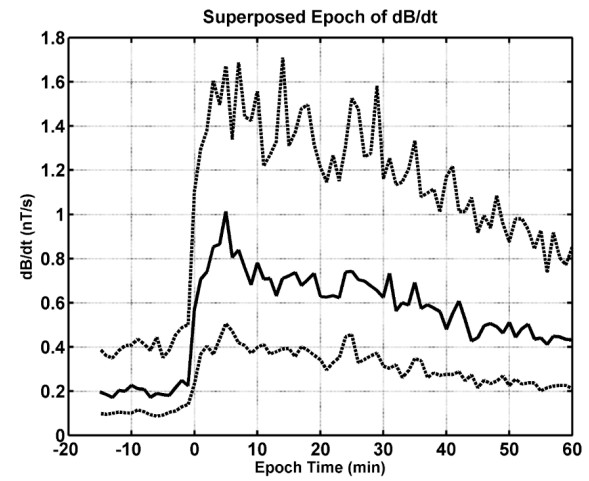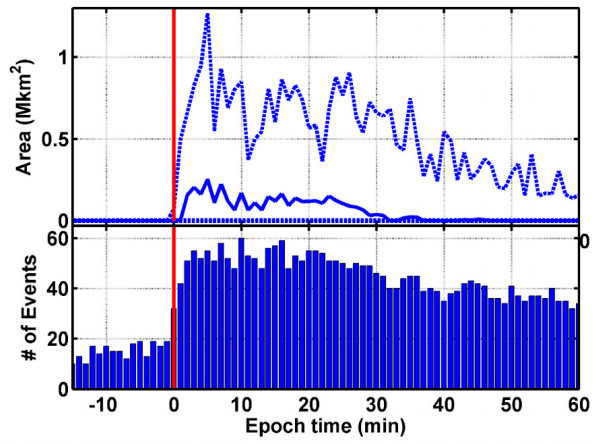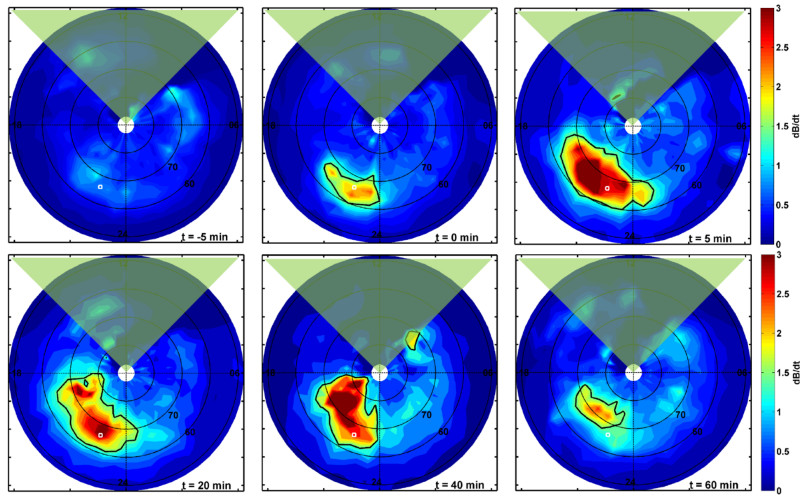1.
Introduction
Fuzzy set (FS) proposed by Zadeh [1] established the foundation in the field of fuzzy set theory and provided a track to address the difficulties of acquiring accurate data for multi-attribute decision-making problems. Fuzzy set only considers membership grade (MG) ″a″ which is bounded to [0,1] while in many real-life problems we have to deal with not only MG but also non-membership grade (NMG) ″b″, and due to this reason, the concept of FS has been extended to intuitionistic fuzzy set (IFS) established by Atanassov [2] that also compensate the drawback of FS. IFS has gained the attention of many researchers and they have used it for their desired results in practical examples for decision-making problems. IFS also enlarges the information space for decision-makers (DMs) because NMG is also involved with the condition that 0≤a+b≤1. Zhao et al. [3] established the generalized intuitionistic fuzzy aggregation operators. Moreover, some intuitionistic fuzzy weighted average, intuitionistic fuzzy ordered weighted average, and intuitionistic fuzzy hybrid average aggregation operators are introduced in [4]. Moreover, IF interaction aggregation operators and IF hybrid arithmetic and geometric aggregation operators are established in [5]. Later on, the MG and NMG are denoted by interval values and a new notion has been introduced called interval-valued IFS (IVIFS) [6] being a generalization of FS and IFS. The notions of IFS and IVIFS have been applied to many areas like group decision-making [7], similarity measure [8], and multicriteria decision-making problems [9]. Zhang et al. [10] introduce some information measures for interval-valued intuitionistic fuzzy sets. In many decision-making problems when decision-makers prove 0.6 as an MG and ″0.5″ as NMG then IFS fail to handle this kind of information, so to overcome this issue, the idea of IFS is further extended to the Pythagorean fuzzy set (PyFS) established by Yager [11] with condition that 0≤a2+b2≤1. Therefore, PyFS can express more information and IFS can be viewed as a particular case of PyFS. Since aggregation operators are very helpful to change the overall data into single value which help us in decision-making problems for the selection of the best alternative among the given ones, so Khan et al. [12] introduced Pythagorean fuzzy Dombi aggregation operators and their application in decision support system. Moreover, PyF interaction aggregation operators and their application to multiple-attribute decision-making have been proposed in [13]. In many circumstances, we have information that cannot be tackled by PyFS like sum(0.82,0.92)∉[0,1], to compensate for this hurdle the idea of.q-rung orthopair fuzzy set (q-ROFS) is established by Yager [14] with condition that 0≤aq+bq≤1 for q≥1. It is clear that IFS and PyFS are special cases of q-ROFS and it is more strong apparatus to deal with the fuzzy information more accurately. Wei et al. [15] introduced some q‐rung orthopair fuzzy Heronian mean operators in multiple attribute decision making. Moreover, Liu and Wang [16] established the multiple-attribute decision-making based on Archimedean Bonferroni operators. Since all ideas given above can only consider only MG and NMG, while in many decision-making problems we need to consider the abstinence grade (AG) ″c″, hence to overcome this drawback, the idea of picture fuzzy set (PFS) has been introduced by Cuong [17]. Cuong et al. [18] introduce the primary fuzzy logic operators, conjunction, disjunction, negation, and implication based on PFS. Furthermore, some concepts and operational laws are proposed by Wang et al. [19], and also some picture fuzzy geometric aggregation operators and their properties have been discussed by them. Some PF aggregation operators are also discussed in [20,21]. Zeng et al. [22] introduced the extended version of the linguistic picture fuzzy Topsis method and its application in enterprise resource planning systems. In the picture fuzzy set, we have a condition that 0≤a+b+c≤1, but in many decision-making problems, the information given by experts cannot be handled by PFS and PFS fail to hold. For example, when experts provide ″0.6″ as MG, ″0.5″ as NMG, and ″0.3″ as AG then we can see that sum(0.6,0.5,0.3)∉[0,1]. To overcome this difficulty, the idea of a spherical fuzzy set has been proposed by Mahmood et al. [23] with condition that 0≤a2+b2+c2≤1. So, SFS is a more general form and provides more space to decision-makers for making their decision in many multi-attribute group decision-making problems. Jin et al. [24] discover the spherical fuzzy logarithmic aggregation operators based on entropy and their application in decision support systems. Furthermore, some weighted average, weighted geometric, and Harmonic mean aggregation operators based on the SF environment with their application in group decision-making problems have been discussed in [25,26]. Also, some spherical fuzzy Dombi aggregation operators are defined in [27]. Ashraf et al. [28] introduced the GRA method based on a spherical linguistic fuzzy Choquet integral environment. Ali et al. [29] introduced the TOPSIS method based on a complex spherical fuzzy set with Bonferroni mean operator.
Note that all the above existing literature has the characteristic that they can only deal with fuzzy information and cannot consider the parameterization structure. Due to this reason, Molodtsov [30] introduced the idea of a soft set (SS) which is more general than that of FS due to parameterization structure. Moreover, Maji et al. [31,32] use the SS in multi-criteria decision-making problems. The notions of a fuzzy soft set (FSftS) has been introduced by Maji et al. [33] which is the combination of fuzzy set and soft set. Also, the applications of FSftS theory to BCK/BC-algebra, in medical diagnosis, and decision-making problems have been established in [34,35,36]. Similarly as FS set is generalized into IFS, FSftS is generalized into an intuitionistic fuzzy soft set (IFSftS) [37] that is more strong apparatus to deal with fuzzy soft theory. Furthermore, Garg and Arora [38] introduced Bonferroni mean aggregation operators under an intuitionistic fuzzy soft set environment and proposed their applications to decision-making problems. Moreover, the concept of intuitionistic fuzzy parameterized soft set theory and its application in decision-making have been established in [39]. Since IFSftS is a limited notion, so the idea of Pythagorean fuzzy soft set PyFSftS has been established by Peng et al. [40]. Furthermore q-rung orthopair fuzzy soft set generalizes the intuitionistic fuzzy soft set, as well as the Pythagorean fuzzy soft set and some q-rung orthopair fuzzy soft aggregation operators, are defined by Husain et al. [41]. Since FSftS,IFSftS,PyFSftS and q−ROFSftS can only explore the MG and NMG but they cannot consider the AG, so to overcome this drawback, PFS and SS are combined to introduce a more general notion called picture fuzzy soft set PFSftS given in [42]. Also, Jan et al. [43] introduced the multi-valued picture fuzzy soft sets and discussed their applications in group decision-making problems. Furthermore, SFS and soft set are combined to introduce a new notion called spherical fuzzy soft set (SFSftS) discussed in [44] being the generalization of picture fuzzy soft set. Furthermore, the concepts of interval-valued neutrosophic fuzzy soft set and bipolar fuzzy neutrosophic fuzzy soft set along with their application in decision-making problems have been introduced in [45,46].
The motivation of the study is to use SFSftS because (1) Most of the existing structure like FSftS,IFSftS,PyFSftS,q−ROFSftS and PFSftS are the special cases of SFSftS. (2) Also, note that SFSftS can cope with the information involving the human opinion based on MG, AG, NMG, and RG. Consider the example of voting where one can vote in favor of someone or vote against someone or abstain to vote or refuse to vote. SFSftS can easily handle this situation, while the existing structures like FSftS,IFSftS,PyFSftS and q−ROFSftS can note cope this situation due to lack of AG or RG. (3) The aim of using SFSftS is to enhance the space of PFSftS because PFSftS has its limitation in assigning MG, AG, and NMG to the element of a set. (4) Also note that FS, IFS, PyFS and q-ROFS are non-parameterized structure, while SFSftS is a parameterized structure, so SFSftS has more advantages over all these concepts. So in this article, based on SFSftS, we have introduced the idea of SFSftWA,SFSftOWA and SFSftHA aggregation operators. Moreover, their properties are discussed in detail.
Further, we organize our article as follows: Section 2 deal with basic notions of FS, SftS, PFS, PFSftS, SFS and SFSftS and their operational laws. In section 3, we have introduced the basic operational laws for SFSftNs. Section 4 deal with some new average aggregation operators called SFSftWA,IVT−SFSftOWA and SFSftHA operators. In section 5, we have established an algorithm and an illustrative example is given to show the validity of the established work. Finally, we have provided the comparative analysis of the proposed work to support the proposed work and show the superiority of established work by comparing it with existing literature.
2.
Preliminaries
Definition 1. [1] Fuzzy set (FS) on a nonempty set U is given by
where a:U→[0,1] denote the MG.
Definition 2. [30] For a fix universal set U,E a set of parameters and T⊆E, the pair (Q,T) is said to be soft set (SftS) over U, where Q is the map given by Q:T→P(U), where P(U) is the power set of U.
Definition 3. [33] Let U be a universal set, E be the set of parameters and H⊆E. A pair (P,H) is said to be fuzzy soft set (FSftS) over U, where ″P″ is the map given by P:H→FSU, which is defined by
where FSU is the family of all FSs on U. Here aj(ϰi) represents the MG satisfying the condition that 0≤aj(ϰi)≤1.
Definition 4. [17] Let U be a universal set then a picture fuzzy set (PFS) over U is given by
where a:U→[0,1] is the MG, b:U→[0,1] is the AG and c:U→[0,1] is NMG with the condition that 0≤a(ϰ)+b(ϰ)+c(x)≤1.
Definition 5. [19,20,21] Let P1=(a1,b1,c1), P2=(a2,b2,c2) be two PFNs and ℷ>0. Then basic operations on PFNs are defined by
1. P1∪P2={(max(a1(ϰ),a2(ϰ))),(min(b1(ϰ),b2(ϰ))),min(c1(ϰ),c2(ϰ))}.
2. P1⋂P2={(min(a1(ϰ),a2(ϰ))),(min(b1(ϰ),b2(ϰ)),(max(c1(ϰ),c2(ϰ))))}.
3. P1c=(c1(ϰ),b1(ϰ),a1(ϰ)).
4. P1⊕P2=((a1(ϰ)+a2(ϰ)−(a1(ϰ))(a2(ϰ))),(b1(ϰ)b2(ϰ)),(c1(ϰ)c2(ϰ))).
5. P1⨂P2=((a1(ϰ)a2(ϰ)),(b1(ϰ)+b2(ϰ)−(b1(ϰ))(b2(ϰ))),(c1(ϰ)+c2(ϰ)−(c1(ϰ))(c2(ϰ)))).
6. P1ℷ=((a1(ϰ))ℷ,(1−(1−b1(ϰ))ℷ),(1−(1−c1(ϰ))ℷ)).
7. ℷP1=((1−(1−a1(ϰ))ℷ),(b1(ϰ))ℷ,((c1(ϰ))ℷ)).
Definition 6. [42] Let U be a universal set, E be the set of parameters and H⊆E. A pair (P,H) is said to be picture fuzzy soft set (PFSftS) over U, where ″P″ is the map given by P:H→PFSU, which is defined by
where PFSU is the family of all PFSs over U. Here aj(ϰi),bj(ϰi), and cj(ϰi) represent the MG, AG, and NMG respectively satisfying the condition that 0≤aj(ϰi)+bj(ϰi)+cj(ϰi)≤1.
Definition 7. [23] Let U be a universal set then a spherical fuzzy set (SFS) over U is given by
where a:U→[0,1] is the MG, b:U→[0,1] is the AG and c:U→[0,1] is NMG with the condition that 0≤(a(ϰ))2+(b(ϰ))2+(c(x))2≤1.
Definition 8. [25] Let S1=(a1,b1,c1), S2=(a2,b2,c2) be two SFNs and ℷ>0. Then basic operations on SFNs are defined by
1. S1∪S2={(max(a1(ϰ),a2(ϰ))),(min(b1(ϰ),b2(ϰ))),min(c1(ϰ),c2(ϰ))}.
2. S1⋂S2={(min(a1(ϰ),a2(ϰ))),(min(b1(ϰ),b2(ϰ)),(max(c1(ϰ),c2(ϰ))))}.
3. S1c=(c1(ϰ),b1(ϰ),a1(ϰ)).
4. S1⊕S2=((√(a1(ϰ))2+(a2(ϰ))2−(a1(ϰ))2(a2(ϰ))2),(b1(ϰ)b2(ϰ)),(c1(ϰ)c2(ϰ))).
5. S1⨂S2=((a1(ϰ)a2(ϰ)),(b1(ϰ)b2(ϰ)),(√(c1(ϰ))2+(c2(ϰ))2−(c1(ϰ))2(c2(ϰ))2)).
6. S1ℷ=(((a1(ϰ))ℷ),(b1(ϰ))ℷ,(√1−(1−c1(ϰ)2)ℷ)).
7. ℷS1=((√1−(1−a1(ϰ)2)ℷ),(b1(ϰ))ℷ,((c1(ϰ))ℷ)).
3.
Operational laws for spherical fuzzy soft numbers
In this section, we will define some basic operational laws for SFSftNs, score function, accuracy function, and certainty function, which further helps in MCDM problems for the selection of the best alternative.
Definition 9. Let Sρij=(aij,bij,cij), S,ρij=(a,ij,b,ij,c,ij) be two SFSftNs and ℷ>0. Then basic operational laws for SFSftNs are defined by
1. Sρij⊆S,ρij iff aij≤a,ij, bij≤b,ij and cij≥c,ij.
2. Sρij=S,ρij iff Sρij⊆S,ρij and S,ρij⊆Sρij.
3. Sρij∪S,ρij=〈max(aij,a,ij),min(bij,b,ij),min(cij,c,ij)〉.
4. Sρij⋂S,ρij=〈min(aij,a,ij),min(bij,b,ij),max(cij,c,ij)〉.
5. Sρijc=(cij,bij,aij).
6. Sρij⊕S,ρij=(√(aij)2+(a,ij)2−(aij)2(a,12)2,bijb,ij,cijc,ij).
7. Sρij⨂S,ρij=(aija,ij,bijb,ij,√(cij)2+(c,ij)2−(cij)2(c,ij)2).
8. ℷSρij=(√1−(1−aij2)k,bijℷ,cijℷ).
9. Sρijℷ=(aijℷ,bijℷ,√1−(1−cij2)ℷ).
Example 1. Let Sρ11=(0.3,0.5,0.6), Sρ12=(0.4,0.7,0.3) and S=(0.2,0.6,0.5) be three SFSftNs and ℷ=3. Then
1. Sρ11∪Sρ12=〈max(0.3,0.4),min(0.5,0.7),min(0.6,0.3)〉=(0.4,0.5,0.3).
2. Sρ11⋂Sρ12=〈min(0.3,0.4),min(0.5,0.7),max(0.6,0.3)〉=(0.3,0.5,0.6).
3. Sc=(0.5,0.6,0.2).
4. Sρ11⊕Sρ12=(√(0.3)2+(0.4)2−(0.3)2(0.4)2,(0.5)(0.7),(0.6)(0.3))=(0.49,0.35,0.18).
5. Sρ11⨂Sρ12=((0.3)(0.4),(0.5)(0.7),√(0.6)2+(0.3)2−(0.6)2(0.3)2) =(0.12,0.35,0.65).
6. ℷS=(√1−(1−0.22)3,(0.6)3,(0.5)3)=(0.3395,0.216,0.125).
7. Sℷ=((0.2)3,(0.6)3,√1−(1−0.52)3)=(0.008,0.216,0.7603).
Definition 10. For a SFSftN,Sρij=(aij,bij,cij), the score function (SF), accuracy function (AF), and certainty function (CF) are respectively defined by
and
Note that SF(Sρ11)∈[−1,1].
Example 2. For a SFSftNSρ11=(0.5,0.6,0.3), score values, accuracy values, and certainty values are respectively calculated by
and
Definition 11. Let Sρ11=(a11,b11,c11) and Sρ12=(a12,b12,c12) be two SFSftNs. Then
1.If Sc(Sρ11)>Sc(Sρ12), then Sρ11≥Sρ12.
2.If Sc(Sρ11)<Sc(Sρ12), then Sρ11≤Sρ12.
3. If Sc(Sρ11)=Sc(Sρ12), then
1) If rSρ11>rSρ12, then Sρ11>Sρ12.
2) If rSρ11=rSρ12, then Sρ11=Sρ12.
Theorem 1. Let Sρ11=(a11,b11,c11) and Sρ12=(a12,b12,c12) be two SFSftNs and ℷ>0. Then the following properties hold.
1. Sρ11⊕Sρ12=Sρ21⊕Sρ11.
2. Sρ11⨂Sρ12=Sρ21⨂Sρ11.
3. ℷ(Sρ11⊕Sρ12)=(ℷSρ11⊕ℷSρ12).
4. (ℷ1+ℷ2)(Sρ11)=ℷ1(Sρ11)+ℷ2(Sρ11).
5. (Sρ11)ℷ1+ℷ2=(Sρ11)ℷ1⨂(Sρ11)ℷ2.
6. (Sρ11)ℷ⨂(Sρ11)ℷ=(Sρ11⨂Sρ11)ℷ.
Proof. Proofs are straightforward and follow immediately from Definition 9.
4.
Spherical fuzzy soft average aggregation operators
In this section, basic notions of SFSftWA, SFSftOWA and SFSftHA operators are elaborated and further their properties are discussed in detail.
4.1. Spherical fuzzy soft weighted averaging aggregation operators
Here, we present the detailed structure of SFSftWA aggregation operator and discuss their properties in detail.
Definition 12. For the collection of SFSftNsSρij=(aij,bij,cij), where i=1,2,…,n and j=1,2,…,m, if w={w1,w2,…,wn} denote the weight vector (WV) of ei experts and p={p1,p2,…,pm} denote the WV of parameters ρj with condition wi,pj∈[0,1] with ∑ni=1wi=1 and ∑mj=1pj=1, then SFSftWA operator is the mapping defined as SFSftWA:Rn→R, where (R is the family of all SFSftNs)
Theorem 2. For a collection of SFSftNs, where Sρij=(aij,bij,cij), then the aggregated result for SFSftWA operator is again a SFSftN and given by
where w={w1,w2,…,wn} denote the WV of ″ei″ experts and p={p1,p2,…,pm} represent the WV of parameters ″ρj″ with condition wi,pj∈[0,1] with ∑ni=1wi=1 and ∑ni=1pi=1.
Proof. Mathematical induction method is to be used to prove this result.
By operational laws, it is clear that
and
We will show that Eq (1) is true for n=2 and m=2.
Hence the result is true for n=2 and m=2.
Next, consider Eq (1) is true for n=k1 and m=k2
Further, suppose that Eq (1) is true for n=k1+1 and m=k2+1.
From the above expression, it is clear that aggregated value is also SFSftN. Hence given Eq (1) is true for n=k1+1 and m=k2+1. Hence it is true for all m,n≥1.
Definition 13. [44] Let U be a universal set, E be a set of parameters and H⊆E. A pair (S,H) is said to be spherical fuzzy soft set (SFSftS) over U, where ″S″ is the map given by S:H→SFSU, which is defined to be
where SFSU is the family of SFSs over U. Here aj(ϰi),bj(ϰi), and cj(ϰi) represents the MG, AG, and NMG respectively satisfying the condition that 0≤(aj(ϰi))2+(bj(ϰi))2+(cj(ϰi))2≤1. For simplicity, the triplet {〈aj(ϰi),bj(ϰi),cj(ϰi)〉} is called spherical fuzzy soft number (SFSftN). Also, refusal grade is defined by
Example 3. From a set of five laptop brands as alternatives A={ϰ1=Dell,ϰ2=Apple,ϰ3=Lenovo,ϰ4=Samsung,ϰ5=Acer}, a person's desire to buy the best brand. Let ρ={ρ1=USB type−C,ρ2=Higher resolution screen,ρ3=Reaonable price,ρ4=8 GB of RAM or more} be the set of parameters. Let w={0.25,0.15,0.14,0.3,0,16} denote the WV of ″ei″ experts and p={0.27,0.19,0.29,0.25} denote the WV of ″ρj″ parameters. The experts provide their information in the form of SFSftNs as given in Table 1.
By using Eq (1), we have
Next, we propose the properties for SFSftWA aggregation operator, which can be easily proved.
Theorem 3. Let Sρij=(aij,bij,cij) for i=1,2,…,n and j=1,2,…,m, be the family of SFSftNs, w=(w1,w2,…,wn)T denote the WV of ei experts and p=(p1,p2,…,pm)T denote the WV of parameters ρj with condition wi,pj∈[0,1] with ∑ni=1wi=1 and ∑mj=1pj=1. Then SFSftWA operator holds the following properties:
1.(Idempotency): Let Sρij=(aij,bij,cij)=S,ρ for all i=1,2,…,n and j=1,2,…,m, where S,ρ=(a,,b,,c,), then SFSftWA(Sρ11,Sρ12,…,Sρnm)=S,ρ.
Proof. If Sρij=(aij,bij,cij)=S,ρ for all i=1,2,…,n and j=1,2,…,m, where S,ρ=(a,,b,,c,), then from Theorem 1, we have
Hence SFSftWA(Sρ11,Sρ12,…,Sρnm)=S,ρ.
2.(Boundedness): If S−ρij=(minjmini{aij},maxjmaxi{bij},maxjmaxi{cij}) and S+ρij=(maxjmaxi{aij},minjmini{bij},minjmini{cij}), then S−ρij≤SFSftWA(Sρ11,Sρ12,…,Sρnm)≤S+ρij.
Proof. As S−ρij=(minjmini{aij},maxjmaxi{bij},maxjmaxi{cij}) and
S+ρij=(maxjmaxi{aij},minjmini{bij},minjmini{cij}), then we have to prove that S−ρij≤SFSftWA(Sρ11,Sρ12,…,Sρnm)≤S+ρij.
Now for each i=1,2,…,n and j=1,2,…,m,
Hence
Now for each i=1,2,…,n and j=1,2,…,m, we have
Also for each i=1,2,…,n and j=1,2,…,m, we get
Therefore from Eqs (2), (3), and (4), it is clear that
and
Let T=SFSftWA(Sρ11,Sρ12,…,Sρnm)=(aT,bT,cT), by Definition 10, we obtain
and
We have the following cases
Case (1): If Sc(T)<Sc(S+ρij) and Sc(T)>Sc(S−ρij), then by the Definition 10, we have
Case (2): If Sc(T)=Sc(S+ρij), that is
(2+aT−bT−cT)3=(2+maxjmaxi(aij)−minjmini(bij)−minjmini(cij))3, then by using the above inequalities, we get
aT=maxjmaxi(aij) and bT=minjmini(bij) and cT=minjmini(cij).
Thus rT=rS+ρij, this implies that SFSftWA(Sρ11,Sρ12,…,Sρnm)=(S+ρij).
Case (3): If Sc(T)=Sc(S−ρij), that is
(2+aT−bT−cT)3=(2+minjmini(aij)−maxjmaxi(bij)−maxjmaxi(cij))3, then by using the above inequalities, we get
aT=minjmini(aij) and bT=maxjmaxi(bij) and cT=maxjmaxi(cij).
Thus rT=rS−ρij, this implies that SFSftWA(Sρ11,Sρ12,…,Sρnm)=(S−ρij).
Hence it is proved that
3. (Monotonicity): Let S,ρij=(a,ij,b,ij,c,ij) be any other collection of SFSftNs for all i=1,2,…,n and j=1,2,…,m such that aij≤a,ij, bij≥b,ij and cij≥c,ij, then
Proof. As aij≤a,ij, bij≥b,ij and cij≥c,ij for i=1,2,…,n and j=1,2,…,m, so
and
Also
Let TS=SFSftWA(Sρ11,Sρ12,…,Sρnm)=(aTS,bTS,cTS) and TS,=SFSftWA(S,ρ11,S,ρ12,…,S,ρnm)=(a,TS,,b,TS,,c,TS,), then from Eqs (5), (6), and (7), we obtain aTS≤a,TS,, bTS≥b,TS, and cTS≥c,TS,.
Now by using Definition 10, we obtain Sc(TS)≤Sc(TS,).
Now we have the following cases
Case (1): If Sc(TS)<Sc(TS,), then by using Definition 11, we have
Case (2): If Sc(TS)=Sc(TS,), then
Hence by using the above inequality, we obtain aTS=a,TS,,bTS=b,TS, and cTS=c,TS,.
So we get rTS=rTS,⇒(aTS,bTS,cTS)=(a,TS,,b,TS,,c,TS,).
Hence it is proved that
4. (Shift Invariance): If S,ρ=(a,,b,,c,) is another family of SFSftNs, then
Proof. Let S,ρ=(a,,b,,c,) and Sρij=(aij,bij,cij) be family of SFSftNs, then
Therefore,
Hence the required result is proved.
5.(Homogeneity): For any real number ℷ≥0,
Proof. Let ℷ≥0 be any real number and Sρij=(aij,bij,cij) be a collection of SFSftNs, then
Now
Hence the result is proved.
4.2. Spherical fuzzy soft ordered weighted average (SFSftOWA) operator
From the above analysis, it is clear that SFSftWA cannot weigh the order position through scoring the SFSft values, so to overcome this drawback, in this section, we will discuss the notion of SFSftOWA operator which can weigh the ordered position thorough scoring the SFSftNs. Also, the properties of established operators are discussed.
Definition 14. Let Sρij=(aij,bij,cij) for i=1,2,…,n and j=1,2,…,m, be the collection of SFSftNs, w={w1,w2,…,wn} and p={p1,p2,…,pm} are the WVs of ″ei″ experts and parameters ρj respectively with condition wi,pj∈[0,1] and ∑ni=1wi=1, ∑mj=1pj=1. Then SFSftOWA operator is the mapping defined by SFSftOWA:Rn→R, where (R is the family of all SFSftNs)
Theorem 4. Let Sρij=(aij,bij,cij) for i=1,2,…,n and j=1,2,…,m, be the family of SFFNs. Then the aggregated result for SFSftOWA operator is again a SFSftN given by
where Sdρij=(adij,bdij,cdij) denote the permutation of ith and jth largest object of the collection of i×jSFSftNsSρij=(aij,bij,cij).
Proof. The proof is similar to Theorem 2.
Example 4. Consider the collection of SFSftNsSρij=(aij,bij,cij) as given in Table 1, of Example 3, then tabular depiction of Sdρij=(adij,bdij,cdij) is given in Table 2.
Now by using Eq (8) of Theorem 4, we have
Theorem 5. For the collection of SFSftNs, Sρij=(aij,bij,cij) for i=1,2,…,n and j=1,2,…,m, w={w1,w2,…,wn} being WV of ei experts and p={p1,p2,…,pm} being WV of parameters ρj with condition wi,pj∈[0,1] and ∑ni=1wi=1, ∑mj=1pj=1, then SFSftOWA operator preserves the following properties.
1.(Idempotency): Let Sρij=(aij,bij,cij)=S,dρ for all i=1,2,…,n and j=1,2,…,m, where S,dρ=(a,,b,,c,), then SFSftOWA(Sρ11,Sρ12,…,Sρnm)=S,dρ.
2. (Boundedness): If S−dρij=(minjmini{adij},maxjmaxi{bdij},maxjmaxi{cdij}) and S+dρij=(maxjmaxi{adij},minjmini{bdij},minjmini{cdij}), then
3. (Monotonicity): Let S,ρij=(a,ij,b,ij,c,ij) be any other collection of SFSftNs for all i=1,2,…,n and j=1,2,…,m such that aij≤a,ij, bij≥b,ij and cij≥c,ij, then
4. (Shift Invariance): If S,ρ=(a,,b,,c,) is another family of SFSftNs, then
5.(Homogeneity): For any real number ℷ≥0,
Proof. The proof is simple and follows from Theorem 3.
4.3. Spherical fuzzy soft hybrid aggregation (SFSftHA) operator
As spherical fuzzy soft hybrid average (SFSftHA) aggregation operator can deal with both situations like measuring the values of SFSftNs and also considering the ordered position of SFSft values, so due to this reason here we elaborate the SFSftHA and discuss properties related to these operators.
Definition 15. For a collection of SFSftNsSρij=(aij,bij,cij);i=1,2,…,n and j=1,2,…,m, and w={w1,w2,…,wn} being WV of ″ei″ experts and p={p1,p2,…,pm} being WV of parameters ρj with condition wi,pj∈[0,1] and ∑ni=1wi=1, ∑mj=1pj=1, the SFSftHA operator is the mapping defined by SFSftHA:Rn→R, where (R denote the family of all SFSftNs)
Theorem 6. Let Sρij=(aij,bij,cij) for i=1,2,…,n and j=1,2,…,m, be the family of SFSftNs having WVs v={v1,v2,…,vn}T and u={u1,u2,…,un}T with condition vi,uj∈[0,1],∑ni=1vi=1,∑mj=1uj=1. Also ″n″ represents the corresponding coefficient for the number of elements in ith row and jth column with WVs w=(w1,w2,…,wn)T denote the WVs of ″ei″ experts and p={p1,p2,…,pm}T being WVs of parameters ″ρj″ with condition wi,pj∈[0,1],∑ni=1wi=1and∑mj=1pj=1, then
where Sρij=nviujSρij denote the permutation of ith and jth largest object of the family of i×jSFSNs Sρij=( aij, bij, cij).
Proof. The proof is similar to Theorem 1.
Example 5. Consider the family of SFSftNsSρij=(aij,bij,cij) as given in Table 1 with WV v={0.17,0.19,.12,0.16,0.36}T and u={0.23,0.2,0.29,0.28}T and having the associated vector as w=(0.23,0.18,0.1,0.27,00.22)T and p={0.23,0.24,0.18,0.35}T. Then by using Eq (10) the corresponding SFSftNs Sρij=( aij, bij, cij) of the permutation of ith and jth largest object of the family of i×jSFSftNs Sρij=( aij, bij, cij) are given in Table 3. Since
Now by using Eq (9), we get
Theorem 7. Let Sρij=(aij,bij,cij) for i=1,2,…,n and j=1,2,…,m, be the family of SFSftNs with WVs v={v1,v2,…,vn}T and u={u1,u2,…,un}T having condition vi,uj∈[0,1] and ∑ni=1vi=1, ∑mj=1uj=1. Also ″n″ represents the corresponding coefficient for the number of elements in ith row and jth column linked with vectors w=(w1,w2,…,wn)T denote the WV of ″ei″ experts and p={p1,p2,…,pm}T denote the WV of parameters ″ρj″ having condition wi,pj∈[0,1] and ∑ni=1wi=1, ∑mj=1pj=1. Then SFSftHA operator contains the subsequent properties:
1. (Idempotency): Let Sρij= S,ρ for all i=1,2,…,n and j=1,2,…,m, S,ρ=nviujS,ρ then
2. (Boundedness): If S−ρij=(minjmini{ aij},maxjmaϰi{ bij},maxjmaxi{ cij}) and S+ρij=(maxjmaxi{ aij},minjmini{ bij},minjmini{ cij}), then
3. (Monotonicity): Let S,ρij=(a,ij,b,ij,c,ij) be any other family of SFSftNs for all i=1,2,…,n and j=1,2,…,m such that aij≤a,ij, bij≥b,ij and cij≥c,ij, then
4. (Shift Invariance): If S,ρ=(a,,b,,c,) is another family of SFSftNs, then
5.(Homogeneity): For any real number ℷ≥0,
Proof. The proof is simple and follows from Theorem 3.
5.
A multicriteria decision making method based on spherical fuzzy soft average aggregation operators
In this section, we will discuss a new MCDM method based on SFSftWA,SFSftOWA and SFSftHA aggregation operators to solve MCDM problems under the environment of SFSftNs.
Consider a common MCDM problem. Let A={ϰ1,ϰ2,ϰ3,…,ϰr} be the set of ″r″ alternative, E={E1,E2,E3,…,En} be the family of ″n″ senior experts with ρ={ρ1,ρ2,ρ3,…,ρm} as a family of ″m″ parameters. The experts evaluate each alternative ϰl(l=1,2,3,…,r) according to their respective parameters ρj(j=1,2,3,…,m). Suppose evaluation information given by experts is in the form of SFSftNsSρij=(aij,bij,cij) for i=1,2,…,n and j=1,2,…,m. Let w={w1,w2,…,wn} denote the WV of ″ei″ experts and p={p1,p2,…,pm} represent the WV of parameters ″ρj″ with a condition that wi,pj∈[0,1] and ∑ni=1wi=1, ∑mi=1pj=1. The overall information is given in matrix M=[Sρij]n×m. By using the aggregation operator for assessment values, the aggregated SFSftN″Bl″ for alternative ϰl(l=1,2,3,…,r) are given by Bl=(al,bl,cl)(l=1,2,…,r). Use the Definition 10 to find the score values for SFSftNs and rank them.
Step vise algorithm is given by
Step 1: Arrange all assessment information given by experts for each alternative to their corresponding parameters to construct an overall decision matrix M=[Sρij]n×m given by:
Step 2: Normalize the SFSft decision matrix that is given in step 1, because there are two type of parameters, cost type parameters and benefit type parameters if it is needed according to the following formula
where {{S}^{c}}_{{\rho }_{\mathcal{i}\mathcal{j}}} = \left({\mathfrak{c}}_{\mathcal{i}\mathcal{j}}, {\mathfrak{b}}_{\mathcal{i}\mathcal{j}}, {\mathfrak{a}}_{\mathcal{i}\mathcal{j}}\right) denote the complement of {S}_{{\rho }_{\mathcal{i}\mathcal{j}}} = \left({\mathfrak{a}}_{\mathcal{i}\mathcal{j}}, {\mathfrak{b}}_{\mathcal{i}\mathcal{j}}, {\mathfrak{c}}_{\mathcal{i}\mathcal{j}}\right) .
Step 3: Aggregate SF{S}_{ft}Ns by using the proposed aggregation operators for each parameter {\rho }_{l}\left(l = 1, 2, \dots, r\right) to get {\mathfrak{B}}_{l} = \left({\mathfrak{a}}_{l}, {\mathfrak{b}}_{l}, {\mathfrak{c}}_{l}\right) .
Step 4: Using Definition 10 to calculate the score values for each ''{{\mathfrak{B}}_{l}}'' .
Step 5: Rank the results for each alternative {\varkappa }_{l}\left(l = 1, 2, 3, \dots, r\right) and choose the best result.
5.1. Application steps for the proposed method
In this section, we describe the detailed explanation of the above-given algorithm through an illustrative example to show the effectiveness of the established work.
Example 6. Suppose a person wants to select the best tyre brand from a set of four alternatives A = \left\{{\varkappa }_{1} = Bridgestone, {\varkappa }_{2} = Hankook, {\varkappa }_{3} = Dunlop, {\varkappa }_{4} = MRF tyres\right\} . Let a team of experts consisting of five members E = \left\{{E}_{1}, {E}_{2}, {E}_{3}, {E}_{4}, {E}_{5}\right\} with WVs \mathcal{w} = \left\{0.15, 0.13, 0.25, 0.23, 0.24\right\} provide their information about alternatives having parameters \rho = \left\{{\rho }_{1} = Cornering \ grip, {\rho }_{2} = Durability, {\rho }_{3} = Fuel \ comsumption, {\rho }_{4} = Internal \ noise, {\rho }_{5} = Aquaplaning\right\} with WVs p = \left\{0.19, 0.29, 0.18, 0.23, 0.11\right\} in the form of SF{S}_{ft}Ns . Now we use the proposed algorithm for the selection of the best alternative.
By using SFSWA operators.
Step 1: The overall expert information based on SF{S}_{ft}Ns is given in Table 4–7.
Step 2: There is no need for normalization of SF{S}_{ft} matrix because of similar kinds of parameters.
Step 3: Using the Eq (1) for each alternative {\varkappa }_{\mathcal{i}}\left(\mathcal{i} = 1, 2, 3, 4\right) , we have
{\mathfrak{B}}_{1} = \left(0.5878, 0.2090, 0.2439\right) , {\mathfrak{B}}_{2} = \left(0.5695, 0.2081, 0.2602\right).
{\mathfrak{B}}_{3} = \left(0.6330, 0.2626, 0.4138\right) , {\mathfrak{B}}_{4} = \left(0.6341, 0.2623, 0.3955\right) .
Step 4: To find out the score values, use Definition 10 for each {\mathfrak{B}}_{\mathcal{i}}\left(\mathcal{i} = 1, 2, 3, 4, 5\right) given in step 3, i.e.
Sc\left({\mathfrak{B}}_{1}\right) = 0.7116 , Sc\left({\mathfrak{B}}_{2}\right) = 0.7004 ,
Sc\left({\mathfrak{B}}_{3}\right) = 0.6522 , Sc\left({\mathfrak{B}}_{4}\right) = 0.6587 .
Step 5: Select the best solution by ranking the score values.
Hence it is clear that ''{{\varkappa }_{1}}'' is the best result.
By using SF{S}_{ft}OWA operators.
Step 1: Same as above.
Step 2: Same as above.
Step 3: Using the Eq (8) for each alternative {\varkappa }_{\mathcal{i}}\left(\mathcal{i} = 1, 2, 3, 4\right) , we have
{\mathfrak{B}}_{1} = \left(\left(0.5670, 0.1843, 0.2113\right)\right) , {\mathfrak{B}}_{2} = \left(\left(0.5601, 0.1936, 0.2211\right)\right) ,
{\mathfrak{B}}_{3} = \left(\left(0.6145, 0.2379, 0.3771\right)\right) , {\mathfrak{B}}_{4} = \left(\left(0.6098, 0.2433, 0.3591\right)\right) .
Step 4: To find out the score values, use Definition 10 for each {\mathfrak{B}}_{\mathcal{i}}\left(\mathcal{i} = 1, 2, 3, 4, 5\right) given in step 3, i.e.
Sc\left({\mathfrak{B}}_{1}\right) = 0.7238 , Sc\left({\mathfrak{B}}_{2}\right) = 0.7151 ,
Sc\left({\mathfrak{B}}_{3}\right) = 0.6665 , Sc\left({\mathfrak{B}}_{4}\right) = 0.6691 .
Step 5: Select the best solution by ranking the score values.
Note that the aggregated result for SF{S}_{ft}OWA operator is same as result obtained for SF{S}_{ft}WA operator. Hence ''{{\varkappa }_{1}}'' is the best result.
By using SF{S}_{ft}{\rm H}A operators.
Step 1: Same as above.
Step 2: Same as above.
Step 3: Using the Eq (9) for each alternative {\varkappa }_{\mathcal{i}}\left(\mathcal{i} = 1, 2, 3, 4\right) , with \mathfrak{v} = \left\{0.12, 0.13, \mathrm{0.2, 0.4}, 0.15\right\} and \mathfrak{u} = \left\{0.11, 0.14, 0.2, 0.3, 0.25\right\} being the WVs of {S}_{{\rho }_{\mathcal{i}\mathcal{j}}} = \left({\mathfrak{a}}_{\mathcal{i}\mathcal{j}}, {\mathfrak{b}}_{\mathcal{i}\mathcal{j}}, {\mathfrak{c}}_{\mathcal{i}\mathcal{j}}\right). Also ''\mathcal{n}'' represents the corresponding balancing coefficient for the number of elements in \mathcal{i}th row and \mathcal{j}th column. Let \mathcal{w} = \left\{0.15, 0.13, 0.25, 0.23, 0.24\right\} be the WV of ''{{\mathcal{e}}_{\mathcal{i}}}'' experts and p = \left\{0.19, 0.29, 0.18, 0.23, 0.11\right\} denote the WV of ''{{\rho }_{\mathcal{j}}}'' parameters, so we get
{\mathfrak{B}}_{1} = \left(\left(0.3823, 0.6357, 0.6422\right)\right) , {\mathfrak{B}}_{2} = \left(\left(0.3801, 0.6379, 0.6411\right)\right) ,
{\mathfrak{B}}_{3} = \left(\left(0.3579, 0.6347, 0.6645\right)\right) , {\mathfrak{B}}_{4} = \left(\left(0.3616, 0.6454, 0.6567\right)\right).
Step 4: To find out the score values, use Definition 10 for each {\mathfrak{B}}_{\mathcal{i}}\left(\mathcal{i} = 1, 2, 3, 4, 5\right) given in step 3, i.e.
Sc\left({\mathfrak{B}}_{1}\right) = 0.3681 , Sc\left({\mathfrak{B}}_{2}\right) = 0.3670 ,
Sc\left({\mathfrak{B}}_{3}\right) = 0.3529 , Sc\left({\mathfrak{B}}_{4}\right) = 0.3531 .
Step 5: Select the best solution by ranking the score values.
Hence it is noted that the aggregated result for SF{S}_{ft}{\rm H}A operator is same as result obtained for SF{S}_{ft}WA and SF{S}_{ft}OWA operator. Hence ''{{\varkappa }_{1}}'' is the best alternative.
5.2. Comparative analysis
In this section, we are desire to establish the comparative analysis of proposed work with some existing operators to discuss the superiority and validity of established work. The overall analysis is captured in the following examples.
Example 7. Let an American movie production company want to select the best movie of the year from a set of five alternatives A = \left\{{\varkappa }_{1} = Bad \ education, {\varkappa }_{2} = The \ invisible \ man, {\varkappa }_{3} = Birds \ of \ prey, {\varkappa }_{4} = Onward, {\varkappa }_{5} = Underwater\right\} under the set of parameters given as \rho = \left\{{\rho }_{1} = Casting, {\rho }_{2} = Originality, {\rho }_{3} = Dialogues, {\rho }_{4} = Overall \ story, {\rho }_{5} = Discipline\right\}. Let \mathcal{w} = \left\{0.12, 0.26, 0.16, 0.22, 0.24\right\} be the WV of ''{{\mathcal{e}}_{\mathcal{i}}}'' experts and p = \left\{0.15, 0.21, 0.28, 0.13, 0.23\right\} denote the WV of ''{{\rho }_{\mathcal{j}}}'' parameters. Suppose experts provide their evaluation data in the form of picture fuzzy soft numbers as shown in Table 8. We use the Garg method [20], Wei method [21], Jin et al. [24] method, Ashraf et al. [25] method to compare with established work. The overall score values and their ranking results for all these methods are given in Table 9.
It is clear from the above analysis that ''{{\varkappa }_{4}}'' is the best alternative for all methods given in Table 9 which shows the validity of the proposed work. Also, note that
(1) If we use only one parameter i.e., {\rho }_{1} mean \left(m = 1\right) , then SF{S}_{ft}WA, SF{S}_{ft}OWA and SF{S}_{ft}HA aggregation operators will reduce to simply spherical fuzzy weighted average (SFWA), spherical fuzzy ordered weighted average (SFOWA), and spherical fuzzy hybrid average (SFHA) aggregation operators that are discussed in Jin et al. method [24] and Ashraf et al. method [25]. It means given work is more general. Also the aggregated results for the Jin et al. method [24] and Ashraf et al. method [25] given in Table 9.
(2) If we replace 2 by 1 in the power of established operators, then SF{S}_{ft}WA, SF{S}_{ft}OWA and SF{S}_{ft}HA aggregation operators will reduce to PF{S}_{ft}WA, PF{S}_{ft}OWA and PF{S}_{ft}HA aggregation operators that show that established operators are more general. Also aggregated results of these reduced operators are given in Table 9.
(3) If we use only one parameter i.e., {\rho }_{1} mean \left(m = 1\right) and replace 2 by 1 in the power of established operators, then SF{S}_{ft}WA, SF{S}_{ft}OWA and SF{S}_{ft}HA aggregation operators will reduce to simply picture fuzzy weighted average (PFWA), picture fuzzy ordered weighted average (PFOWA), and picture fuzzy hybrid average (PFHA) aggregation operators given in Garg method [20] and Wei method [21]. So in this case, again the established operators are also more general. Also, the aggregated results for the Garg method [20] and Wei method [21] are given in Table 9.
(4) Also note that the Garg method [20]. Wei method [21], Jin et al. method [24], and Ashraf et al. method [25] are non–parameterize structure while the established work is parameterized structure, so establish work is more general.
Moreover, Figure 1 shows the graphical representation of the above analysis given in Table 9.
Example 8. Let an American movie production company want to select the best movie of the year from a set of five alternatives \left({\varkappa }_{1} = Bad \ education, {\varkappa }_{2} = The \ invisible \ man, {\varkappa }_{3} = Birds \ of \ prey, {\varkappa }_{4 } = Onward, {\varkappa }_{5 } = Underwater\right) under the set of parameters given as \left({\rho }_{1} = Casting, {\rho }_{2} = Originality, {\rho }_{3} = Dialogues, {\rho }_{4} = Overall \ story, {\rho }_{5} = Discipline\right) . Let \mathcal{w} = \left\{0.12, 0.26, 0.16, 0.22, 0.24\right\} be the WV of ''{{\mathcal{e}}_{\mathcal{i}}}'' experts and p = \left\{0.15, 0.21, 0.28, 0.13, 0.23\right\} denote the WV of ''{{\rho }_{\mathcal{j}}}'' parameters. Suppose experts provide their evaluation data in the form of spherical fuzzy soft numbers as shown in Table 10. We use the Garg method [20], Wei method [21], Jin et al. method [24], Ashraf et al. [25] method to compare with established work. The overall score values and their ranking results for all these methods are given in Table 11.
(1) It is clear that when decision-makers provide their assessment value in the form of SF{S}_{ft}Ns then the Garg method [20], Wei method [21], PF{S}_{ft}WA operator, PF{S}_{ft}OWA operator and PF{S}_{ft}HA operator fails to tackle such kind of information because when decision-maker provides the data as \left(0.5, 0.4, 0.6\right), where 0.5 is MG, 0.4 is an AG and 0.6 is a NMG, then necessary condition i.e., sum (0.5, 0.4, 0.6) must belong to [0, 1] fail to hold that is the necessary condition for the Garg method [20], Wei method [21], PF{S}_{ft}WA operator, PF{S}_{ft}OWA operator and PF{S}_{ft}HA operator, while establishing work along with Jin et al. [24] method and Ashraf et al, [25] method can cope with this situation. So introduced work is more efficient.
(2) Also, the Garg method [20], Wei method [21], Jin et al. [24] method, and Ashraf et al. [25] method cannot consider the parameterization structure while the established work can do so. Also proposed work provides more space to decision-makers to deal with MCDM problems. Hence, established work is more superior to existing literature.
Furthermore, Figure 2 shows the graphical representation of the data given in Table 11.
Example 9. Let an American movie production company want to select the best movie of the year from a set of five alternatives \left({\varkappa }_{1} = Bad \ education, {\varkappa }_{2} = The \ invisible \ man, {\varkappa }_{3} = Birds \ of \ prey, {\varkappa }_{4 } = Onward\right) under the set of parameters given as \left({\rho }_{1} = Casting, {\rho }_{2} = Originality, {\rho }_{3} = Dialogues, {\rho }_{4} = Overall story, {\rho }_{5} = Discipline\right) . Let \mathcal{w} = \left\{0.12, 0.26, 0.16, 0.22, 0.24\right\} be the WV of ''{{\mathcal{e}}_{\mathcal{i}}}'' experts and p = \left\{0.15, 0.21, 0.28, 0.13, 0.23\right\} denote the WV of ''{{\rho }_{\mathcal{j}}}'' parameters. These different parameters of SF{S}_{ft}Ns have been aggregated by using Eq (1) with \mathcal{w} = \left\{0.12, 0.26, 0.16, 0.22, 0.24\right\} and get overall decision matrix for different alternatives {\varkappa }_{\mathcal{i}}(\mathcal{i} = 1, 2, 3, 4) given in Table 12. We still use the Garg method [20], Wei method [21], Jin et al. method [24], Ashraf et al. [25] method to compare with established work. The overall score values and their ranking results for all these methods are given in Table 13.
It is clear that the overall information given in Table 12 again consist of SF{S}_{ft}Ns and this type of information cannot be tackles by the Garg method [20], Wei method [21], PF{S}_{ft}WA operator, PF{S}_{ft}OWA operator and PF{S}_{ft}HA operator, because necessary condition i.e., sum\left(0.1919, 0.7366, 0.6409\right) fail to hold for all above-given methods for the data \left(\begin{array}{c}0.1919, 0.7366, \\ 0.6409\end{array}\right) given in Table 12, while established work can handle this kind of information. So, the proposed work is more general. Also, we can see from Table 13 that the Garg method [20], Wei method [21], Jin et al. method [24], and Ashraf et al method [25] cannot consider parameterization structure, while established work can do so. Hence, the proposed operators are more superior to that of the existing operators. Also, graphical representation of data given in Table 13 is given in Figure 3.
Example 10. During the pandemic situation of Covid-19, the selection of Covid-19 vaccine is difficult challenge for the countries. Let the a country X want to import the best vaccine for their Covide-19 patients. Let the set P = \left\{{\varkappa }_{1} = Pfizer-BioNTech, {\varkappa }_{2} = Sinopharm, {\varkappa }_{3} = Oxford-Astrazeneca, {\varkappa }_{4} = Novavax, {\varkappa }_{5} = Moderna\right\} denote the set of different vaccines as an alternative under the parameter set given as \rho = \left\{{\rho }_{1} = Protection \ against \ disease, {\rho }_{2} = Side \ effects, {\rho }_{3} = Delivery \ time, {\rho }_{4} = Effectiveness, {\rho }_{5} = Experimental \ results\right\}. Let \mathcal{w} = \left\{0.22, 0.26, 0.11, 0.28, 0.13\right\} be the WV of ''{{\mathcal{e}}_{\mathcal{i}}}'' experts and p = \left\{0.25, 0.19, 0.24, 0.10, 0.22\right\} denote the WV of ''{{\rho }_{\mathcal{j}}}'' parameters. We use the Garg method [20], Wei method [21], Jin et al. method [24], Ashraf et al. [25] method and Deli and Broumi methods [51,52] to compare with established work. Now we use the data given in Table 14 provided by the experts in the form of SF{S}_{ft}Ns and overall score values and their ranking results for all above given methods are given in Table 15.
(1) It is clear that the best alternative i.e., {\varkappa }_{1} = Pfizer-BioNTech for Jin et al. method [24], Ashraf et al. method [25], SF{S}_{ft}WA, SF{S}_{ft}OWA and SF{S}_{ft}HA aggregation operators are the same that show the validity of introduced work.
(2) Also note that the results for Deli and Broumi [51] and Deli and Broumi [52] are slightly different from the results for the introduced operators. It is because the methods that are given in [51] and [52] are based on neutrosophic soft set \left(N{S}_{ft}S\right) and N{S}_{ft}S do not consider the refusal grade (RG) while computing the scores. Infect there is no concept of RG in the neutrosophic soft set, while the established work can do so. That is the reason that the introduced work and methods that are given in [51] and [52] produce different results.
5.3. Conclusion
In the basic notions of F{S}_{ft}S, IF{S}_{ft}, {P}_{y}F{S}_{ft}S and q-ROF{S}_{ft}S, the yes or no type of aspects have been denoted by MG or NMG. But note that, in real-life problems, human opinion is not restricted to MG and NMD but it has AG or RG as well. So the all above given methods cannot cope with this situation, while SF{S}_{ft}S has the characteristics to handle this situation. Since the MCDM method is a renowned method for the selection of the best alternative among a given one and aggregation operators are very efficient apparatus to convert the overall information into a single value so based on spherical fuzzy soft set SF{S}_{ft}S , the notions of SF{S}_{ft} average aggregation operators are introduced like spherical fuzzy soft weighted average aggregation \left(SF{S}_{ft}WA\right) operator, spherical fuzzy soft ordered weighted average aggregation \left(SF{S}_{ft}OWA\right) operator and spherical fuzzy soft hybrid average aggregation \left(SF{S}_{ft}HA\right) operator. Moreover, the properties of these aggregation operators are discussed in detail. An algorithm is established and a numerical example is given to show the authenticity of established work. Furthermore, a comparative study is proposed with other existing methods to show the strength and advantages of established work.
In the future direction, based on the operational laws for SF{S}_{ft}S, some other aggregation operators and similarities measure for medical diagnosis and pattern recognition can be defined as given in [47,48]. Furthermore, this work can be extended to a T-spherical fuzzy set and real-life problems can be resolved as given in [49,50].
Acknowledgments
This paper was supported by Algebra and Applications Research Unit, Division of Computational Science, Faculty of Science, Prince of Songkla University.
Conflict of interest
The authors declare no conflict of interest.









 DownLoad:
DownLoad:







